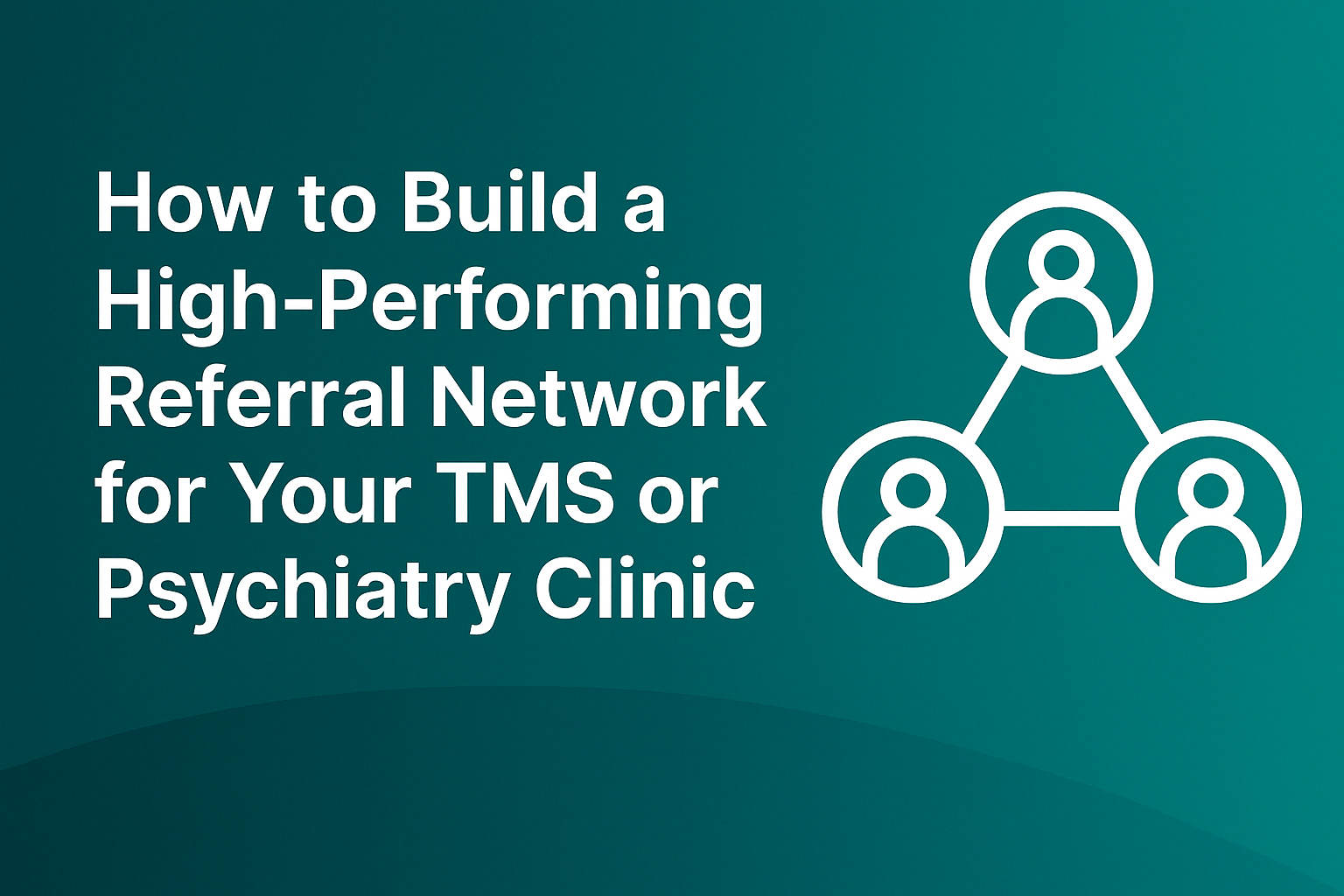Introduction
Most mental health clinics know that referrals matter. But few have a system to capture them, track them, and turn them into long-term sources of growth.
At Rise4, we’ve helped dozens of clinics scale by implementing a structured referral system—one that was originally taught to us by Suzanne Jesse at Anew Era TMS. We’ve since adapted, refined, and proven this system across hundreds of practices.
Whether you’re running a solo psychiatry office or scaling a multi-site interventional clinic, here’s how to build a referral pipeline that actually works.

Step 1: Capture Provider Information Early
Every new patient is a referral opportunity—but most clinics miss it by not asking the right questions during intake. Here’s what you should always ask:
- Do you currently see a psychiatrist?
- Do you have a therapist?
- Have you worked with any providers in the past?
Once you capture this info, log it in a referral tracking spreadsheet or CRM—you now have a warm contact who already knows the patient and could be open to collaboration.
Pro tip: Past providers are often more willing to refer again if you show them how well their former patient did under your care.
Step 2: Obtain a Medical Release (ROI)
To legally and ethically share patient results with other providers, you need a signed Release of Information (ROI).
The best time to collect this is during intake or on the first day of treatment. Keep it simple:
“We’d love to keep your other providers in the loop so you get the most well-rounded care. Would you like us to share your progress with them?”
Have most of the form pre-filled to reduce friction. Once signed, update your tracking system to reflect that outreach can begin.
Step 3: Share Results and Educate the Provider
This is where the magic happens.
Once treatment is underway—and especially once the patient begins improving—you send a treatment summary to the referring provider. This can include:
- Patient diagnosis and dates of treatment
- Clinical outcomes (PHQ-9, BDI, GAD scores)
- Notes on adherence and response
- An invitation to collaborate or refer again
Drop off the report in person, if possible. Include printed literature or a trifold for their waiting room, and ask to schedule a follow-up luncheon or educational visit.
“Most providers are blown away when they see the results—especially when they come with an actual success story they helped initiate.”
Step 4: Nurture and Track the Relationship
Once a referral source sends one patient, the job isn’t done—it’s just begun.
Use your tracking sheet or CRM to:
- Log referral dates and results
- Set reminders to follow up quarterly
- Add them to your email newsletter
- Invite them to open houses or educational events
Referring providers need to know they matter—and your consistent, professional communication is what turns them into long-term allies.
Conclusion
Referral relationships aren’t built on hope. They’re built on systems.
When you consistently gather provider info, obtain ROIs, share real results, and nurture relationships, you create a sustainable engine of growth—one that doesn’t rely solely on paid advertising or chance.
If you want help building this system inside your own clinic—or want the tools to scale it across multiple locations—we’ve done it dozens of times. Let’s do it for you.

